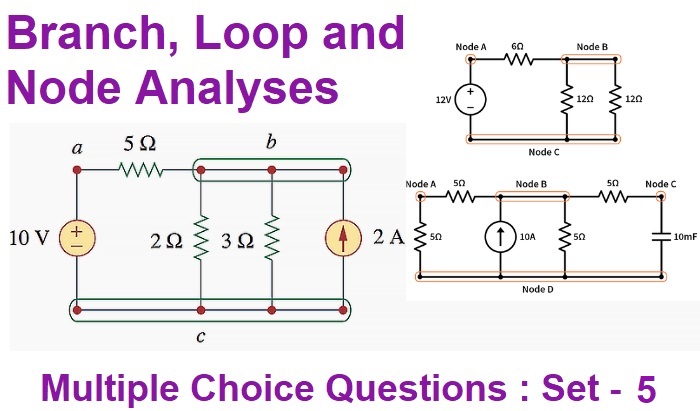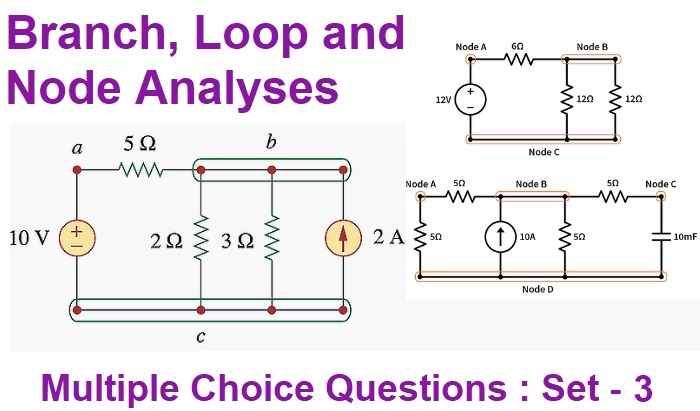Thevenin Theorem
Thevenin Theorem provides a mathematical technique for replacing a given network, as viewed from two output terminals, by a single voltage source with a series resistance. It makes the solution of complicated networks (particularly, electronic networks) quite quick and easy. The application of this extremely useful theorem will be explained with the help of the following simple example.
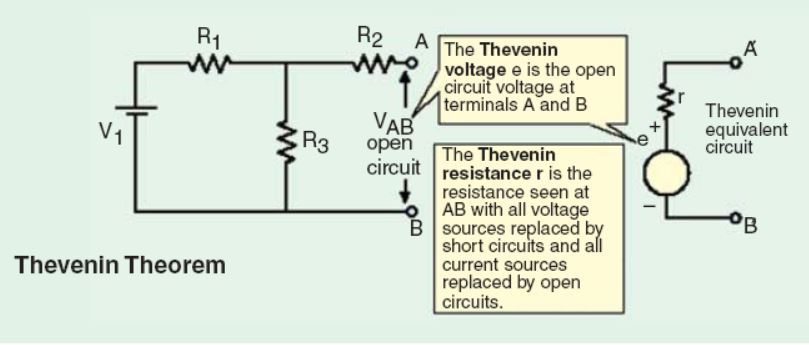
Suppose, it is required to find current flowing through load resistance RL, as shown in Figure (a). We will proceed as under :
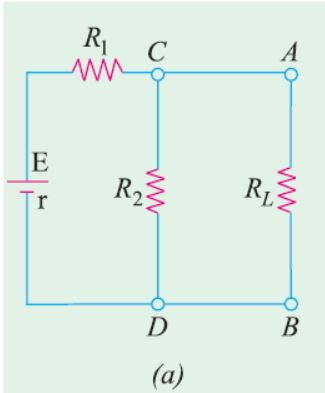
1. Remove RL from the circuit terminals A and B and redraw the circuit as shown in Figure (b). Obviously, the terminals have become open-circuited.
2. Calculate the open-circuit voltage Voc which appears across terminals A and B when they are open i.e. when RL is removed.
As seen, Voc = drop across R2 = IR2 where I is the circuit current
when A and B are open.

 ………. (r is the internal resistance of battery)
………. (r is the internal resistance of battery)
It is also called ‘Thevenin voltage’ Vth.
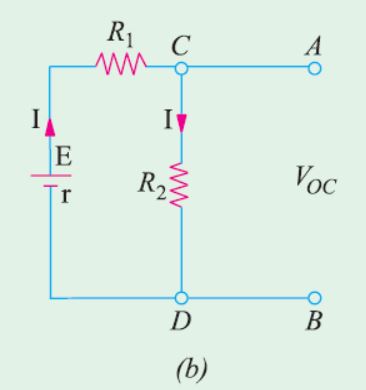
3. Now, imagine the battery to be removed from the circuit, leaving its internal resistance r behind and redraw the circuit, as shown in Figure (c). When viewed inwards from terminals A and B, the circuit consists of two parallel paths : one containing R2 and the other containing (R1 + r). The equivalent resistance of the network, as viewed from these terminals is given as

This resistance is also called, Thevenin resistance Rsh (though, it is also sometimes written as Ri or R0).

Consequently, as viewed from terminals A and B, the whole network (excluding R1) can be reduced to a single source (called Thevenin’s source) whose e.m.f. equals V∝ (or Vsh) and whose internal resistance equals Rsh (or Ri) as shown in Figure given below.

4. RL is now connected back across terminals A and B from where it was temporarily removed earlier. Current flowing through RL is given by

It is clear from above that any network of resistors and voltage sources (and current sources as well) when viewed from any points A and B in the network, can be replaced by a single voltage source and a single resistance in series with the voltage source. After this replacement of the network by a single voltage source with a series resistance has been accomplished, it is easy to find current in any load resistance joined across terminals A and B. This theorem is valid even for those linear networks which have a nonlinear load.
Hence, Thevenin’s theorem, as applied to d.c. circuits, may be stated as under :
The current flowing through a load resistance RL connected across any two terminals A and B of a linear, active bilateral network is given by Voc || (Ri + RL) where Voc is the open-circuit voltage (i.e. voltage across the two terminals when RL is removed) and Ri is the internal resistance of the network as viewed back into the open-circuited network from terminals A and B with all voltage sources replaced by their internal resistance (if any) and current sources by infinite resistance.
Read article – Units of Resistivity
Visit NCERTplanet.com for NCERT solutions and Textbook downloads

